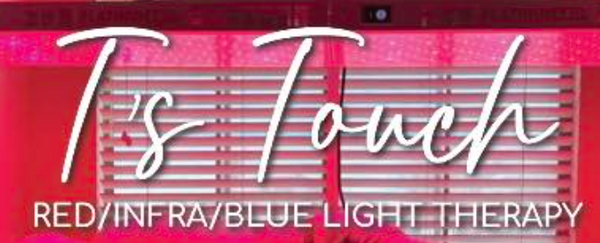Blue Light Therapy
You May Not Be Taking Any Accutane Medicine For Acne In Order To Use This Treatment.
What Is Blue Light Therapy?
Photobiomodulation therapy (PBMT) refers to the biological impacts caused by applying light in the 400–1100 nm wavelength range. Increasing evidence suggests that blue light can reduce tissue inflammation, promotes wound healing, and results in bacterial growth.
Blue light therapy uses light to treat certain conditions on or just under the skin. It’s considered a pain-free procedure. Blue light therapy becomes photodynamic therapy when it uses a combination of photosynthesizing (or light-sensitive) drugs and a high-intensity light source to activate them.
Benefits Of Blue Light Therapy:
- Sun Damage and Skin Cancer Prevention:
Blue light therapy is most commonly used to treat sun damage and premalignant or malignant skin cancer growths. It can actually be used to prevent skin cancer and remove both precancerous skin lesions and cancerous skin lesions that haven’t spread to other areas of the body (or metastasized).
Photodynamic therapy can be used to treat skin cancer. It causes the photosynthesizing drug that’s been applied to the skin to react with oxygen, killing the cancer cells. It may also be used to trigger an immune system defense or damage the blood vessels feeding the cancer cells.
- Acne and Skincare:
Blue light therapy can also treat other types of skin disorders. It can be used to improve skin texture and reduce sebaceous hyperplasia, or enlarged oil glands. It can help with removing sun spots, acne, and even scars that were originally caused by acne.
- Depression:
In addition to treating skin conditions and cancer, blue light therapy can also be used as a treatment for depression.
It’s especially effective when treating major depressive disorder with seasonal patterns, formerly known as seasonal affective disorder (SAD). This condition is often partially caused by dreary winter weather, darker days, and spending more time indoors. It can be treated with light.
How Blue Light Therapy Works:
Blue light therapy treatment is usually a very quick process, and is almost always done as an outpatient procedure. The exception to this may be photodynamic therapy on high-risk areas for cancer treatment.
In office, your doctor or skin care specialist will escort you to a darkened room. If they’re using photosynthesizing drugs, they’ll apply the medication topically, directly to the area being treated.
If these drugs are being used, the medication may need to be on the skin for a couple of hours up to a couple of days, for the skin to absorb the medication. Regardless of how long it’s left on, you’ll be advised to stay out of the sunlight and other bright light, protect your skin, and stay indoors as much as possible while the medication is on.
When your doctor administers the light treatment, they’ll give you goggles to wear to protect your eyes, and then they’ll apply light to the target area.
Treatment sessions can be anywhere from 15 to 90 minutes long, depending on the area being treated, how large it is, and if a topical medication has been applied. If it’s just one small area being treated, like a single spot of skin cancer, the affected area will have blue light applied to it for about 17 minutes.
How Effective is Blue Light Therapy:
Blue light therapy is an effective treatment for skin conditions when used repeatedly and when the individual being treated makes maintenance appointments. To treat a condition, it takes:
- one to four treatments for Actinic Keratosis (precancerous sun spots), with annual maintenance
- four to six treatments for Acne, with maintenance appointments every six months
Photodynamic therapy is more effective for treating cancerous areas, including skin cancer lesions, thanks to the photosynthesizing drugs that create a stronger reaction.
Potential Risks and Complications:
***You May Not Be Taking Any Accutane Medicine For Acne In Order To Use This Treatment.***
Blue light therapy on its own, without the photosensitivity drugs added, is safe and has very few risks. You shouldn’t have blue light therapy if you have a rare condition called Porphyria, which is a disorder of the blood that leads to heightened light sensitivity, or if you have allergies to porphyrins. You also shouldn’t use this therapy if you have lupus.
Takeaway:
Blue light therapy is a painless, noninvasive procedure that can be used to treat different conditions in an outpatient environment. It has limited long-term side effects, and only a few mild, immediate side effects.
When photosynthesizing drugs are added, photodynamic therapy can be an effective alternative therapy for cancer that’s found beneath the skin, too.
To prepare your home for the days following your procedure, you can close the curtains before you leave so you’ll be limiting the amount of light that affects your skin. Avoid making plans that will require you to be outdoors immediately following treatment, and keep the area clean with soap and water.
